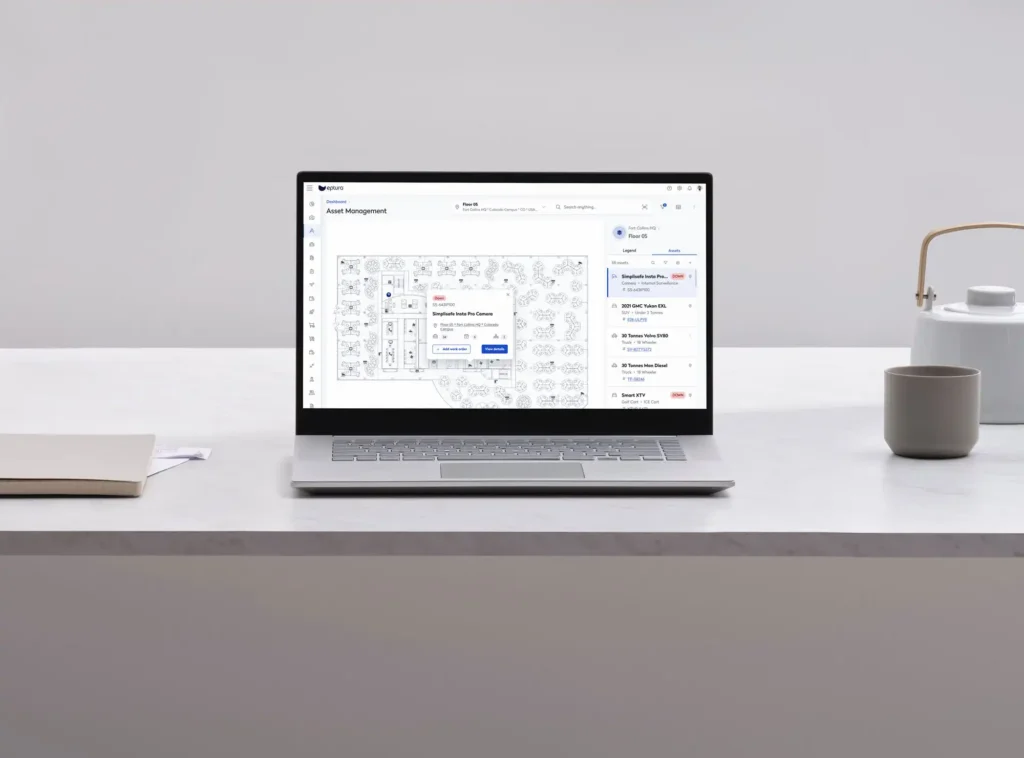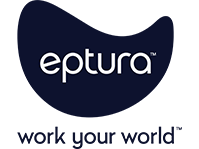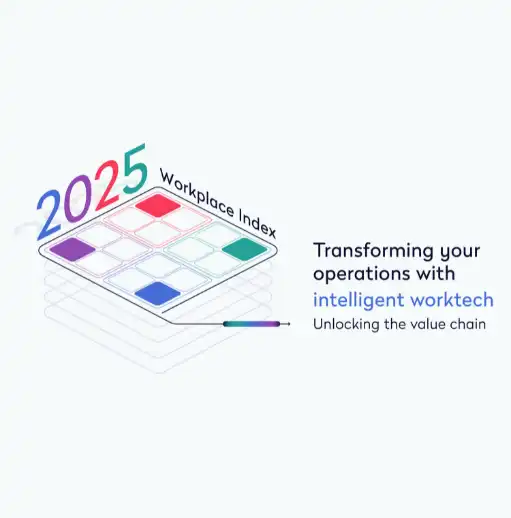
In an era defined by hybrid work, rising operational costs, and growing pressure to make the most of every square foot, managing physical assets and workspaces has become more complex — and more critical — than ever.
Enterprises are rethinking how they use their buildings, not just to cut costs, but to create environments that support productivity, safety, sustainability, and a great employee experience.
At the center of this shift is building management software — a powerful toolset that can bring clarity to complexity, automate routine tasks, and provide the data leaders need to make confident, forward-looking decisions. But with a crowded marketplace and a wide spectrum of capabilities, selecting the right tool can feel overwhelming. What features truly matter? How do you balance flexibility with scalability? And how do you ensure the system you choose aligns with your unique operational goals and growth strategy?
These are strategic questions, and getting the answer right can mean the difference between a facility that merely functions and one that fuels your enterprise’s long-term success.
Understanding your enterprise’s unique requirements
Before evaluating building management software options, the most important step is looking inward. No two enterprises operate exactly the same way, and a one-size-fits-all approach to facility management rarely delivers meaningful long-term value.
Instead, start by assessing the specific challenges your organization faces and the outcomes you’re working toward. Are you navigating the complexities of hybrid work and trying to make smarter use of underutilized space? Do you struggle with reactive maintenance processes that result in unplanned downtime, costly repairs, or frustrated employees? Perhaps your facilities team is spending too much time juggling spreadsheets and disconnected systems, leading to inefficiencies that slow everything down.
For some enterprises, the driving force might be ensuring compliance with health, safety, or environmental regulations — especially in highly regulated industries like manufacturing, healthcare, or financial services. For others, it’s about aligning the workplace with sustainability goals, reducing energy consumption, or planning for long-term capital improvements.
Whatever the case, clearly defining your organization’s needs creates a focused decision-making framework. It helps you separate must-have capabilities from nice-to-haves and ensures you’re evaluating platforms based on their ability to solve the problems that matter most. That clarity also empowers your internal teams — from facilities and operations to IT and finance — to align around a shared vision of what success looks like, both during implementation and beyond.
Key features to consider in building management software
When evaluating potential solutions, certain features stand out as essential for effective facility management:
- Space management: Efficiently allocate and utilize every square foot of your facility. This includes tools for seating assignments, office layouts, and management of shared spaces to foster collaboration and productivity.
- Maintenance management: Schedule and track maintenance tasks to ensure equipment longevity and minimize unexpected breakdowns. Preventive maintenance features can proactively address issues before they escalate.
- Asset tracking: Maintain a centralized repository of all physical assets, monitoring their locations, conditions, and maintenance histories. This helps in informed decision-making regarding repairs or replacements.
- Move management: Simplify the logistics of office relocations or internal shifts, ensuring minimal disruption to daily operations.
- Compliance and sustainability monitoring: Ensure adherence to regulatory standards and monitor energy usage to support sustainability initiatives.

Eptura: A comprehensive solution for a smarter built environment
In a world where enterprises are managing an increasingly complex mix of people, places, and physical assets, Eptura stands out by delivering one unified, intelligent platform that simplifies operations while unlocking powerful new capabilities. Instead of relying on fragmented tools for maintenance, space planning, asset management, and employee experience, organizations can centralize everything through Eptura’s integrated suite. This approach not only improves operational visibility but also enables cross-functional collaboration across facilities, IT, HR, and leadership teams.
Embedded AI and cross-platform analytics turn raw data into actionable insights, helping teams predict asset maintenance needs, optimize space usage during peak occupancy days, and automate routine workflows. With integrations to Microsoft Teams, real-time sensor data, and mobile-first interfaces, Eptura makes high-performance facility and workplace management accessible and intuitive.
Research from the 2025 Workplace Index reveals that 50% of businesses rely on an average of 17 separate worktech tools — creating silos that hinder value creation. Only 4% have fully integrated systems, yet integration is key to unlocking productivity and enabling the use of advanced AI. Eptura addresses this gap directly. Tools like Eptura Envision provide real-time dashboards that give leaders clear insight into how their portfolios are performing, while solutions like Eptura Engage (Condeco) and Eptura Asset streamline booking, maintenance, and asset tracking from a single source of truth.
Whether you’re managing hybrid teams, preparing for growth, or navigating regulatory requirements, Eptura scales with you — offering enterprise-grade security (including FedRAMP-in-process status), automation, and performance analytics that drive smarter decisions and more efficient use of every square foot.
The result is not just better building management. It’s better decisions, better spaces, and better outcomes — whether you’re optimizing energy use, enabling hybrid collaboration, managing compliance, or simply ensuring that every square foot is contributing to your mission.
Real-world success: How smart space management saved this government healthcare facility millions
This government healthcare organization manages one of the largest healthcare footprints in the world, spanning 18 regions, over 1,100 clinics, and a massive 184 million square feet of facility space. Tasked with delivering care to millions, they’ve built a reputation not just for medical excellence, but for forward-thinking operations. Their mission has always extended beyond patient treatment to include the responsible stewardship of space, resources, and taxpayer dollars. Faced with surging demand and limited budgets, they saw an opportunity to lead the charge in redefining how healthcare facilities operate at scale.
The problem
Like many large-scale healthcare providers, this organization faced rising patient volumes and a chorus of internal departments requesting more space. But with capital budgets stretched thin and new construction off the table, leadership needed a new approach — one that didn’t involve expanding their physical footprint. The real problem wasn’t the total amount of space; it was how that space was being used. Many rooms across the portfolio sat idle for long periods, while other services operated under capacity constraints. The question became clear: How could they extract more value from the space they already had?
The solution
To solve this, the organization implemented Archibus by Eptura, a comprehensive space management platform designed to centralize data, enhance visibility, and inform smarter decision-making. With Archibus, they created an accurate, real-time inventory of how every square foot was being used. This revealed numerous underutilized areas — including one 330-square-foot room initially used for occasional X-rays. By converting that seldom-used space into a fully functioning infusion treatment area, the organization eliminated the need to outsource those services — resulting in an impressive $8.3 million in annual savings. With centralized reporting and data-driven insights, the organization is now able to plan multipurpose spaces that flex to meet changing needs, all while keeping care delivery in-house.
The outcome
The impact of these changes has been nothing short of transformative. By improving facility utilization by just 2.5%, the organization estimates they could save up to $2 billion annually in outsourced medical care. Beyond cost savings, these changes improve patient outcomes by keeping services closer to home and enable the organization to reinvest in innovation. Looking ahead, they’re expanding their optimization efforts to include preventative maintenance and condition assessments — leveraging Archibus not just to manage space, but to extend the life of their facilities. Their story is a powerful testament to what’s possible when technology, strategy, and purpose align.
Want to see how a single room helped spark a revolution in healthcare operations? Read the full case study.
Implementation: Ensuring a smooth transition
Implementing a new building management software system is more than a technology upgrade — it’s a shift in how your organization understands and manages its physical environment. To make this transition successful, it’s essential to engage stakeholders early, bringing together voices from facilities, IT, operations, and even HR to align goals and define success. Adequate training should follow close behind, equipping users with the tools and confidence to make full use of the software’s capabilities. An often-overlooked component is data migration, which must be approached with care to preserve the integrity of existing records and maintain business continuity.
Finally, implementation isn’t a one-time event. Continuous evaluation, user feedback, and periodic optimization are key to ensuring that the system evolves alongside your organization’s needs. A smooth transition requires attention not just to the software itself, but to the people and processes it will support.
Connecting systems for better decisions
In today’s enterprise environments, software rarely operates in isolation. Most organizations rely on a web of interconnected platforms — from HR and scheduling tools to asset management databases and environmental monitoring systems. The real power of modern building management software lies in its ability to integrate seamlessly with these systems, enabling unified visibility and smarter decision-making.
Eptura stands out for its open, API-driven architecture that allows for easy interoperability across a range of platforms. Whether it’s syncing with Microsoft Teams to book a meeting space, integrating with your maintenance system to automate work orders, or connecting with occupancy sensors to inform real-time space usage, Eptura transforms disparate data points into actionable insights. This level of integration eliminates data silos, reduces duplication of effort, and empowers teams to move faster and with greater confidence.
For enterprises navigating complex real estate portfolios or managing hybrid workplaces, this kind of interconnected intelligence is invaluable. It means facility managers can see, in one dashboard, how space is being used, how equipment is performing, and what employees need — allowing for more strategic planning, faster response times, and ultimately, better experiences for everyone who interacts with the built environment.
Ready to rethink how your spaces work?
Choosing the right building management software isn’t just about features — it’s about setting your organization up for long-term resilience, smarter operations, and a workplace that truly works for everyone. When you align your technology with your goals, you unlock new opportunities to drive efficiency, improve the employee experience, and make better decisions at every level.
Want to see how Eptura can help you get there? Get in touch with our team today








